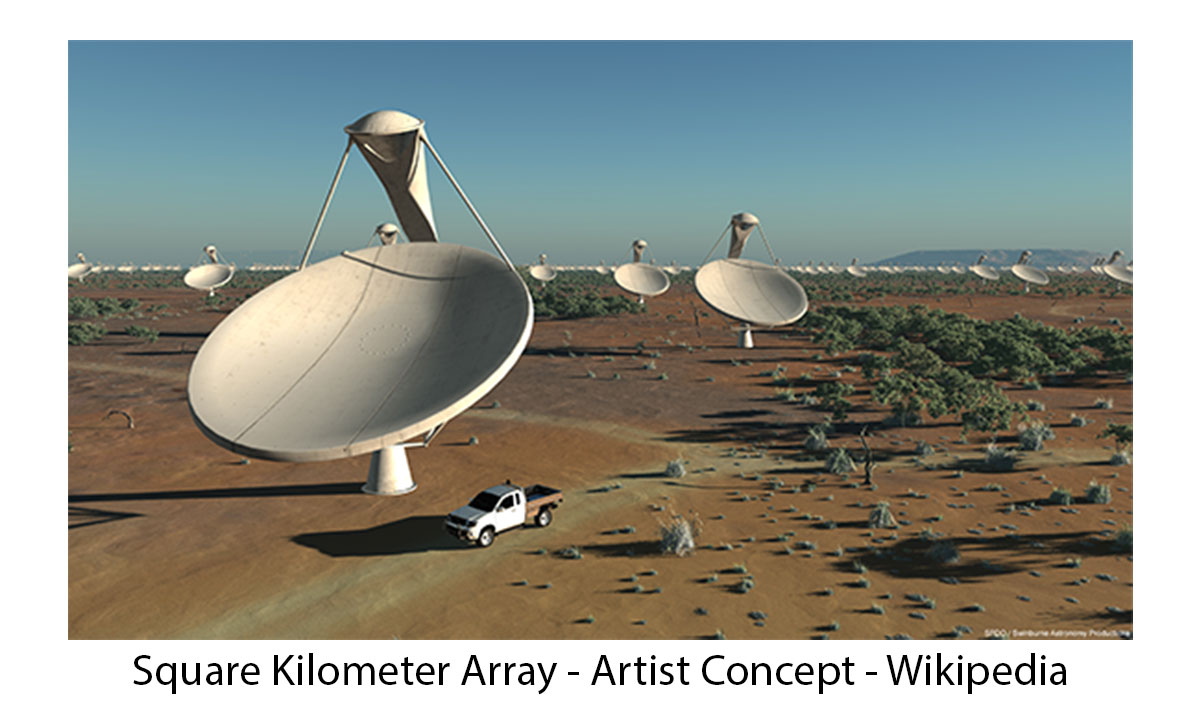Observatory Open House / Lecture /April Public Star Night Sq Km Array by Dr. Dayton Jones

The Square Kilometer Array
is the subject of this month’s Estes Valley Astronomical Society (EVAS) meeting. EVAS in conjunction with The Estes Park Memorial Observatory is offering a free public open house/star night on Saturday April 23rd, 7 PM. The goal of EVAS is to promote amateur astronomy and education in the Estes valley.
For nearly twenty years the international radio astronomy community has been developing the technology and designs for a revolutionary new research instrument, the Square Kilometer Array (SKA). The SKA will be the next-generation facility for radio astronomy, offering a tremendous increase in sensitivity and flexibility over any existing radio facility in the world. These new capabilities will help answer some of the most fundamental questions in astrophysics, including the formation of nearby planetary systems, tests of gravitational theories in the strong-field limit, and the long-term evolution and fate of our universe. The SKA will be composed of four separate types of radio telescopes, each covering a different part of the radio spectrum. The proposed US component of the SKA will cover the highest frequencies, and will be based on an expansion of the NRAO Very Large Array in New Mexico. New telescope arrays in southern Africa and western Australia will cover lower frequencies. Significant prototype arrays are already under construction in both South Africa and Australia with funding from the host countries and other nations. Together, these arrays will provide an unprecedented leap in observational capabilities. This talk will cover a few of the major science goals of the SKA, and some of the innovative technology developments that are essential to the affordability of such an ambitious international project.
Our speaker is Dr. Dayton Jones who has worked at Caltech’s Jet Propulsion Laboratory in Pasadena, California for over thirty years, retiring as a Principal Scientist and moving to Colorado last year. He is currently a Senior Research Scientist at the Space Science Institute in Boulder. His research interests have focused on high-resolution imaging and position measurements of distant radio sources using interferometry. He has served as an officer of the US SKA Consortium, a subcommittee chair for the SKA Science Working Group, and a US representative to the international SKA Science and Engineering Council.
The observatory is just north of the high school at 1600 Manford Ave. The doors will open at 7:00pm and the meeting will start at 7:30pm. Map and directions to the observatory can be found on the website at: www.AngelsAbove.org
